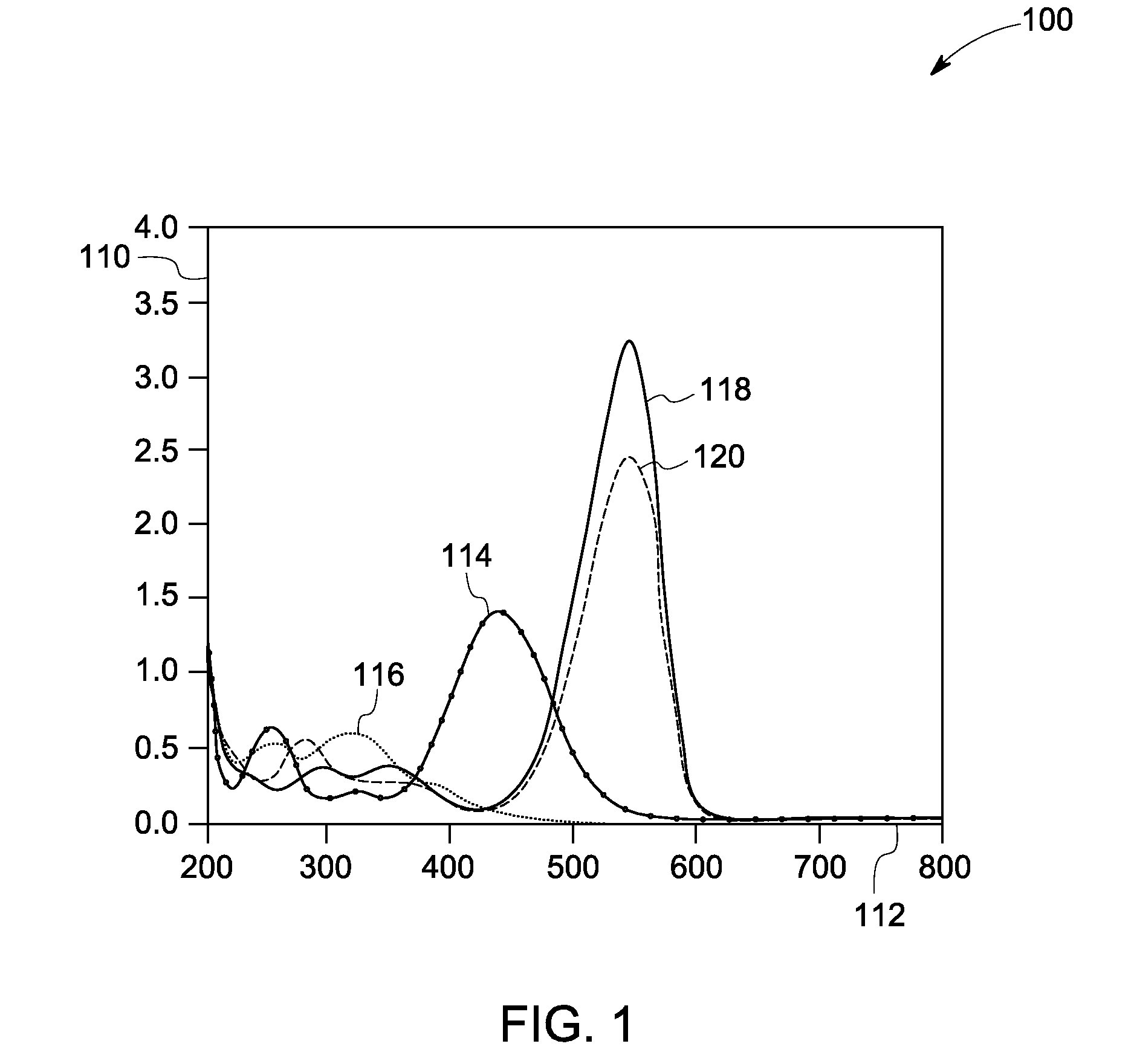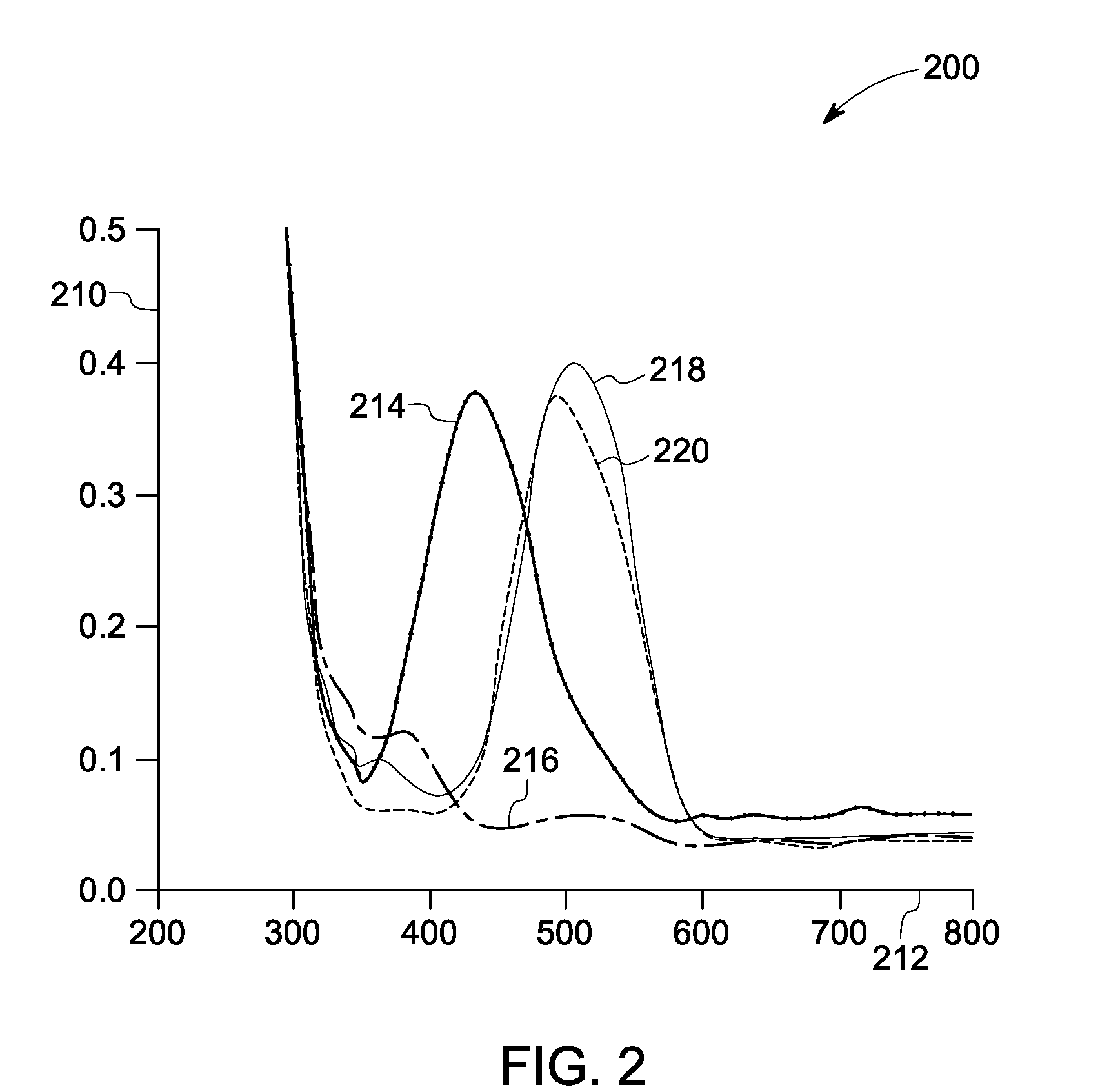Compositions and method for making thereof
a technology applied in the field of compositions and methods for making thereof, can solve problems such as complication of recording and readou
- Summary
- Abstract
- Description
- Claims
- Application Information
AI Technical Summary
Problems solved by technology
Method used
Image
Examples
example 1
Preparation of a Dye
[0066]Step A: Preparation of Phenylhydroxylamine.
[0067]Ammonium chloride (20.71 grams, 0.39 moles), de-ionized water (380 milliliters), nitrobenzene (41.81 grams, 0.34 moles), and ethanol (420 milliliters, 95 percent) are added to a 1-liter, 3-neck round-bottom flask equipped with a mechanical stirrer, thermometer, and nitrogen inlet. The resultant reaction mixture is cooled to 15 degrees Celsius using an ice water bath. Zinc powder (46.84 grams, 0.72 moles) is added to the cooled mixture in portions, and over a period of about 0.5 hours while ensuring that the temperature does not exceed 25 degrees Celsius. After the complete addition of the zinc, the reaction mixture is warmed to room temperature. The warmed mixture is stirred for half an hour and is then filtered to remove zinc salt and unreacted zinc. The filter cake (i.e., the zinc salt) is first washed with hot water (about 200 milliliters) and then is washed with methylene chloride (about 100 milliliters)....
example 2
Preparation of Dye
[0070]Step A: Preparation of 4-carbethoxyphenyl hydroxylamine
[0071]Ammonium chloride (9.2 grams, 0.17 moles), de-ionized water (140 milliliters), p-nitroethylbenzoate (29.28 grams, 0.15 moles), and ethanol (150 milliliters, 95 percent) are added to a 500 milliliter, 3-neck round-bottom flask equipped with a mechanical stirrer, thermometer, and nitrogen inlet. The resultant reaction mixture is cooled to 15 degrees Celsius using an ice water bath. Zinc powder (21.82 grams, 0.34 moles) is added to the cooled mixture in portions, and over a period of about 0.25 hours while ensuring that the temperature does not exceed 15 degrees Celsius. After the complete addition of the zinc, the reaction mixture is warmed to room temperature. The warmed mixture is stirred for one hour and is then filtered to remove zinc salt and unreacted zinc. The filter cake (i.e., the zinc salt) is first washed with hot water (about 200 milliliters) and then is washed with methylene chloride (abo...
example 3
Procedure for Preparing Solution Samples
[0074]About 2 milligrams of the dye prepared in Example 1 or in Example 2 are added to acetonitrile (100 milliliters). The resultant mixture is stirred for about 2 hours or until complete dissolution of the dye in the acetonitrile.
PUM
| Property | Measurement | Unit |
|---|---|---|
| Composition | aaaaa | aaaaa |
| Structure | aaaaa | aaaaa |
Abstract
Description
Claims
Application Information
 Login to View More
Login to View More - R&D
- Intellectual Property
- Life Sciences
- Materials
- Tech Scout
- Unparalleled Data Quality
- Higher Quality Content
- 60% Fewer Hallucinations
Browse by: Latest US Patents, China's latest patents, Technical Efficacy Thesaurus, Application Domain, Technology Topic, Popular Technical Reports.
© 2025 PatSnap. All rights reserved.Legal|Privacy policy|Modern Slavery Act Transparency Statement|Sitemap|About US| Contact US: help@patsnap.com



